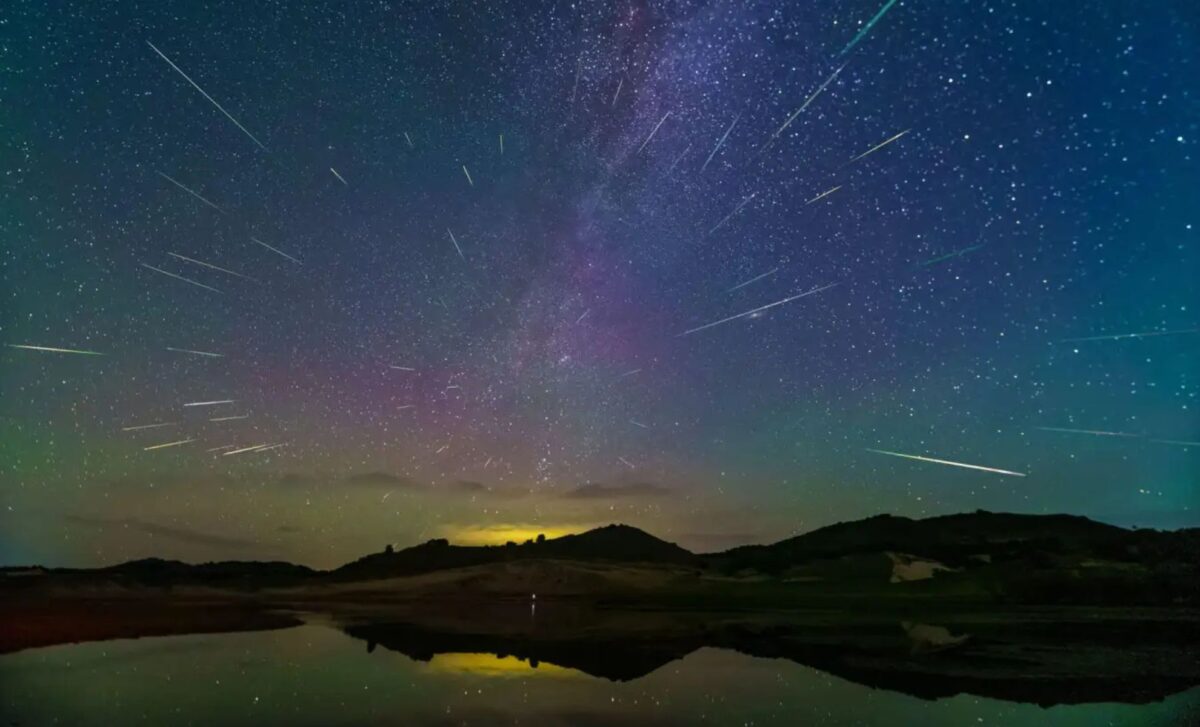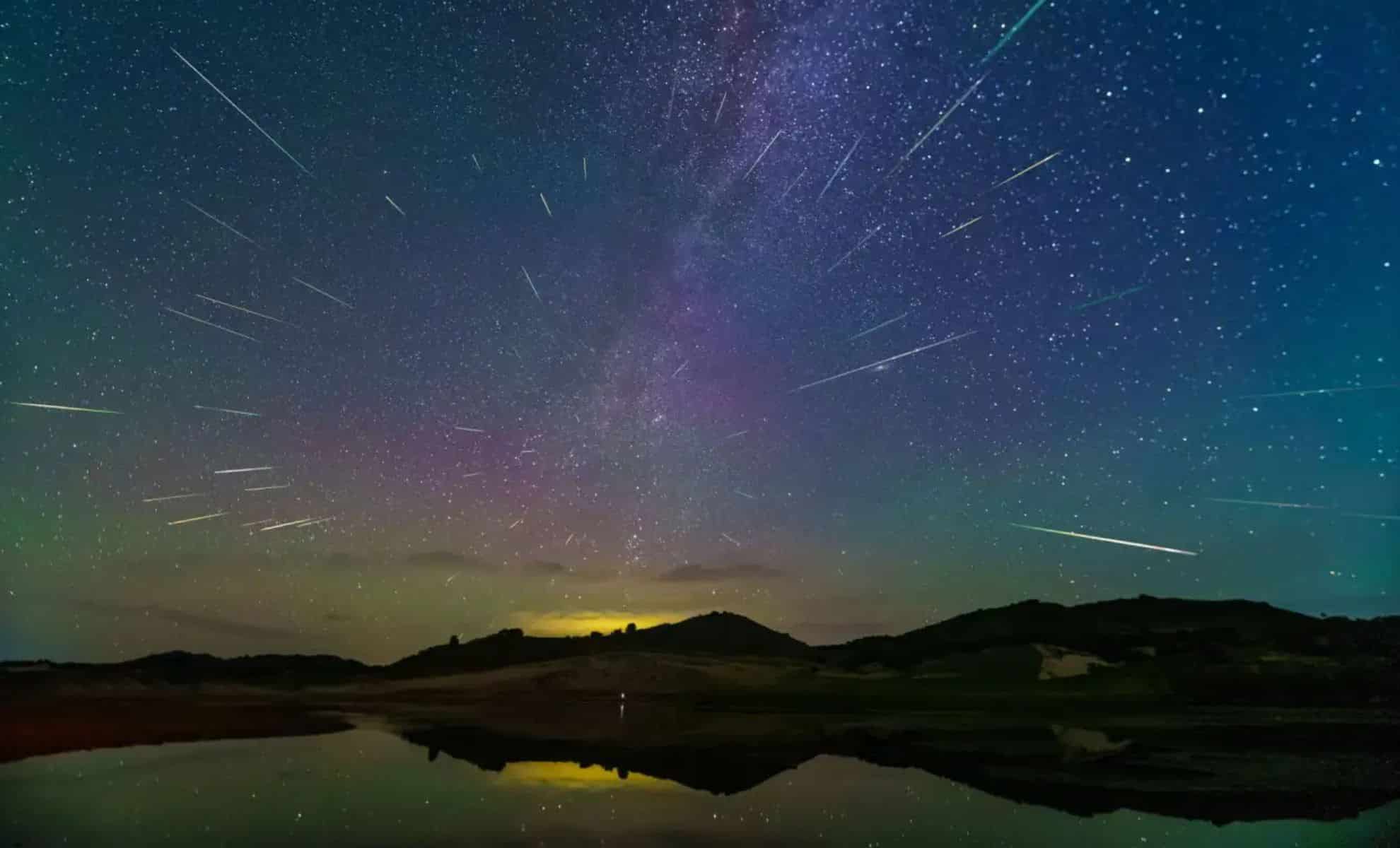The Orionid meteor shower, caused by debris from Halley’s Comet, is about to peak, offering a chance to see bright meteors racing across the night sky. Despite the challenge posed by a bright moon this year, the Orionids remain one of the fastest and most beautiful meteor showers, with meteors traveling at 41 miles per second.
Orionid Meteor Shower Set to Light Up the Sky: What to Expect and How to Watch

The Orionid meteor shower, one of the most visually stunning meteor showers of the year, is expected to dazzle stargazers soon. This celestial event, caused by debris from Halley’s Comet, is known for its fast and bright meteors, offering an impressive display for those who know where and when to look. Each year, the Orionids present a chance to witness pieces of one of the most famous comets in history burning up as they streak through Earth's atmosphere.
Viewing Tips for the Orionid Meteor Shower
The Orionid meteor shower is named after the constellation Orion, from which the meteors appear to radiate. The constellation reaches its highest point in the sky around 2 a.m., making the hours after midnight the best time for viewing. Stargazers across both the Northern and Southern Hemispheres will have the opportunity to see meteors, but the Southwestern sky offers the best vantage point for viewers in the United States.
This year, the Orionids will be visible from September 26 to November 22, but peak activity is expected in the early hours of October 21, with the best viewing opportunities on the nights of October 20 and 21. NASA advises, "Find an area well away from the city or street lights. Come prepared with a sleeping bag, blanket, or lawn chair. Lie flat on your back with your feet facing southeast if you are in the Northern Hemisphere, or northeast if you are in the Southern Hemisphere, and look up, taking in as much of the sky as possible."
In optimal conditions, with clear skies and minimal light pollution, viewers could see between 10 and 20 meteors per hour during the peak. However, the moon, which will be nearly 80% illuminated during the peak nights, may make it more difficult to see the fainter meteors. Despite this, the brighter fireballs that the Orionids are known for should still be visible.
The Science Behind the Orionids
The Orionid meteor shower occurs annually when Earth passes through the debris trail left by Halley’s Comet. As these particles collide with our atmosphere, they burn up, creating the bright streaks of light that we see as meteors. Halley’s Comet itself follows a highly elliptical orbit around the Sun, and every time it passes close to the Sun, it sheds dust and ice that form the basis of the Orionids.
Despite the comet’s long orbit—it won’t return until 2061—its debris continues to create two major meteor showers each year: the Orionids in October and the Eta Aquariids in May. Halley’s Comet has been observed for centuries, but it was Edmond Halley who, in 1705, correctly predicted its return every 76 years, based on earlier sightings.
NASA describes the Orionids as “one of the most beautiful showers of the year,” with meteors that travel at 41 miles per second, making them among the fastest of all meteor showers. The high speed of these meteors often results in bright fireballs and long, glowing trails.
Challenges and Rewards of this Year’s Viewing
The Orionids can provide a stunning spectacle, but this year, the moon’s brightness poses a challenge. The full moon on October 17 means that, by the peak nights of October 20-21, the moon will still be around 80% illuminated, potentially washing out some of the fainter meteors. However, the Orionids are known for producing particularly bright meteors, so there is still a good chance to witness the more spectacular fireballs.
To maximize your viewing experience, avoid artificial lights and give your eyes time to adjust to the darkness. NASA recommends looking about 45 to 90 degrees away from the constellation Orion for the longest and brightest meteors. By avoiding direct moonlight and focusing on darker sections of the sky, you can increase your chances of seeing more meteors.
Despite the moonlight, this year's Orionid meteor shower still promises to be a breathtaking display, offering a glimpse of the cosmic debris left behind by one of the most famous comets in history. Whether you’re a seasoned stargazer or a casual observer, the Orionids present a rare opportunity to connect with the broader universe and witness the remnants of Halley’s Comet in action.



